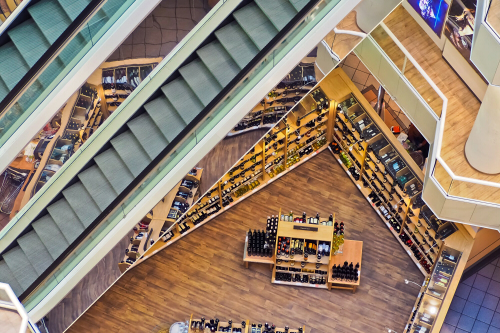How Costco Quietly Became a $7-Billion Fast-fashion Powerhouse
Elizabeth Segran
Costco is no one’s idea of fashion paradise. The warehouse club’s 800 stores aren’t particularly alluring, with their concrete floors and harsh overhead lighting. Clothes are stacked in piles on tables, and it’s never exactly clear what brands will be available the day you go shopping. There are no changing rooms to see if a garment fits. There aren’t even mannequins to give you the vaguest idea of how the outfit would look on a body.
And yet, Costco has somehow managed to become a fashion powerhouse. Costco’s 85 million members, who pay an annual fee starting at $60 to gain access to goods at bargain prices, are filling their baskets with $70 North Face jackets and $13 Jessica Simpson jeans, along with bulk salmon and pasta. According to the Washington Post, the company generated $7 billion in sales annually in clothes and footwear, which is more than Old Navy, Neiman Marcus, or Ralph Lauren. Its fashion revenue has been growing at a rate of about 9% a year for the past four years, which is faster than its food or electronics business.
Costco has its own in-house clothing label, called Kirkland. But the retailer also receives boxes of unsold inventory from other big brands–from Eddie Bauer to Tory Burch to Birkenstock – and sells them at low prices. Analysts told the Washington Post that some fashion labels appreciated the fact that they could offload excess goods without “tarnishing their reputations.” This is in part because the average Costco consumer is relatively wealthy, with a household annual income of more than $100,000, which is a coveted demographic for many brands.
This growth has been happening as the rest of the fashion industry has been going through the so-called retail apocalypse, with thousands of stores around the country shuttering and entire brands biting the dust. This year alone, more than 7,150 retail stores, including many fashion brands, have closed. This includes many fashion retailers selling at similar price points to Costco, like Topshop, Dressbarn, Charlotte Russe, and Chicos. Brands like Gymboree and Payless Shoe Source have filed for bankruptcy.
Many fashion and retail analysts (including myself) have argued that these brands have faltered because they have failed to provide exciting in-store experiences for customers who now have the option of shopping online. It’s also true that fast-fashion companies like H&M, Topshop, and Zara, which built their brands on selling inexpensive, on-trend items – sometimes at the cost of worker’s rights and sustainability – have been on the decline. But Costco’s in-store experience isn’t particularly pleasant and it effectively sells fast fashion. So what is going on?
Part of it comes down to who shops at Costco. Some evidence suggests that younger consumers are more conscious and want to buy from ethical brands, like Everland and Allbirds. Surveys find that older customers are less focused on ethics when shopping for clothes and may be more tempted by low-priced, on-trend goods. This may be what is driving Costco’s fashion boom. The company’s customers skew older and it has had trouble attracting the under 50 set. And it appears to have found success by embracing fast fashion, serving as a “clearance rack” for the rest of the fashion industry.

This isn’t good news for the planet. Part of what makes fast fashion such an environmental scourge is that brands bet on trends they believe will be fashionable nine months from now, then churn out inventory. If they get it wrong – as they often do – they are stuck with lots of goods no one wants. At that point, they have two choices: they can either sell their excess goods for next to nothing to price-driven customers (but this conditions consumers to expect cheap clothes, which they are more likely to throw out after a few wears); alternatively, brands can dispose of these goods, like burning them, which is incredibly wasteful and destructive to the planet. Some fast-fashion brands are trying to move away from this model by incorporating more sustainable practices. H&M, for instance, has launched brands like Arket, which produces more classic, durable good that are less trend driven and are slightly more expensive. But Costco is effectively supporting the fast-fashion business model by creating a secondary market where it can sell off unwanted goods at low prices.
It’s unfortunate, because Costco’s customers are wealthy and have the disposable income to be more conscious consumers. But there is evidence that Costco, and other warehouse clubs, aren’t growing as fast as they once were, in part because they aren’t attracting millennials. Startups like Everlane and Allbirds, which are popular with millennials, are rejecting fast fashion by creating more classic, timeless styles that have a longer shelf life. Brands like Misha Nonoo and Margaux make products on demand, so there is never any excess inventory. They’re illustrating what the future of fashion could look like, and if Costco doesn’t keep up, its fashion boom may end when the Boomer generation, now between 55 and 75, is too old to shop there anymore.








